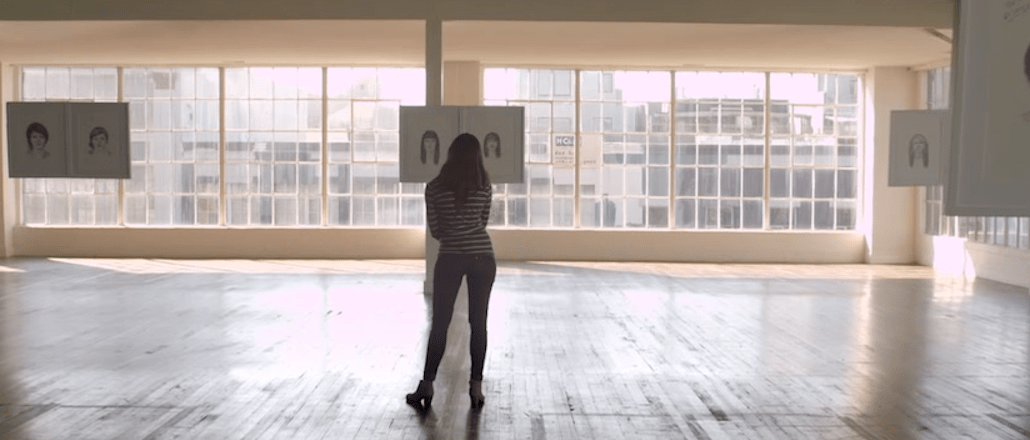Insights from CTV leaders at Dentsu, Horizon Media and more

Mark Duffy has written the Copyranter blog for 10 years and is a freelancing copywriter with 20-plus years of experience. His hockey wrist shot is better than yours. Follow him on Twitter.
Finally. Earlier this month, Dove finally got widely called out by women over their insidious “Real Beauty” ad campaign.
For over 10 years now, the personal care brand — behind a veneer of “empowerment” — has passive-aggressively assaulted women’s physical insecurities to sell beauty products.
This is the campaign’s mission statement, according to Fernando Machado, Dove’s global brand vice president: “To create a world where beauty is a source of confidence and not anxiety.”
That’s right: “beauty” has been the focus. Physical characteristics. Outward attractiveness. That’s Dove’s definition of “real” beauty.
But the worst part of the campaign is the unspoken claim by Dove that all the women used in their ad pranks and stunts have been “real” women in “real” situations.
That’s balderdash.
As any veteran ad creative/producer who has worked on these new types of “gotcha” video ads can tell you (but won’t, because they’d lose their jobs), there’s nothing random about them. The ads are cast — maybe not always with actresses, but the women are picked and prepped ahead of time — and the videos are slickly produced and heavily edited to get the best execution of the concept. What the consumer never sees are the “real” women who don’t act or react the way that the client/agency wanted them to; they don’t make the final cut.
Why no major ad critics have aggressively called Dove’s bluff on this unethical fakery is amazing to me. But finally, Tom Ellis-Jones writing for U.K. trade publication Marketing, called foul on Dove’s latest ad “Choose Beautiful” — where women in five cities around the world were given a choice to walk through one of two doors labeled “Average” and “Beautiful.”
First, he noticed that the woman in the opening scene was an actress, Dezi Solèy. He then went on to call the ad’s scenes “perfectly engineered … clichés being dressed up as a genuine social experiment.”
Watch the ad closely and you’ll see he’s right — the reactions, what’s said in the interviews, the mom playfully pulling her daughter through the “Beautiful” door — it’s all just so perfectly wonderful, isn’t it?
A Dove rep responded to Ellis-Jones’ accusations to Business Insider:
“Dezi Solèy, an actress, does not appear in the Dove Choose Beautiful film. The film captures women in their natural settings entering local shopping malls where they live, work, and shop in five major cities around the globe. While Ms. Solèy may have been present during the filming in San Francisco, she was not included in the film.”
And what does “women in their natural settings” mean? Also, it’s not a film, it’s an ad. Solèy, for her part, tweeted this last year:
feeling blessed en route to “Doors/Choose Beautiful” documentary set #DocuFilm #blessed #ChooseBeautiful pic.twitter.com/jMNkamf8Ca
— dezi solèy (@dezisoley) October 4, 2014
Arabelle Sicardi, writing for BuzzFeed, skewered the video, wondering why “life is apparently defined by these two labels and nothing else.” She added, “Not being beautiful doesn’t mean you’re average. Feeling beautiful is an obligation and a pressure — and sometimes a pleasure, but not always. Feeling beautiful is so much work: work that beauty companies cash in on and exploit.”
Arwa Mahdawi, in a Guardian piece titled, “Sorry Dove, empowerment isn’t a personal care product,” pointed out how cut and dried the Real Beauty campaign has been: Dove “has pretty much perfected a formula of calculated social experiment + statistics + sad background music + earnest message about beauty ideals.”
On the plus side, the ad did inspire this brilliant parody, courtesy of satire site Reductress.

Other stunt video ads in the campaign have been specious as well. The 2013 Real Beauty Sketches ad was universally lauded and won a Titanium Grand Prix Lion at the Cannes Advertising Festival.
Two major red flags popped up for me right away about this “experiment”: Was the FBI sketch artist in on the concept of the ad? And who exactly were these “strangers” who were asked by Dove to describe the test women for the second sketch—and were they coached to give flattering descriptions? If you think I’m being too cynical, my response is: I most likely know more about how these types of ads are made than you.
And then, maybe worst of all, there was last year’s “Dove Patches—beauty is a state of mind” video ad. Ogilvy Brazil (the main agency for this campaign) got a psychologist who specializes in body image to prescribe women (patients?) the “RB-X” patch, which she told them was supposed to “enhance their image of their own beauty.”
What sentient being would actually believe that hooey? The women wore it for a couple of weeks, and, suspiciously, all reported that they felt better about themselves. The psychologist then revealed that they had been wearing a placebo. None of them were upset! Bullshit! If this had been a real experiment, there would have been some less-than-positive responses.
My suggestion, going forward: These ads are being created by ad and marketing specialists, not psychoanalytical professionals—so, maybe Unilever should get the hell out the field of anxiety treatment?
More in Marketing

Creator marketing has the reach — CMOs want the rigor
The creator economy got big enough to be taken seriously.

Pitch deck: Why Google believes its latest AI Max product is a game changer for search campaigns
AI Max, which launched May and rolls out this summer, aims to provide advertisers with a “one-click feature suite” for search campaigns.

Retail media’s mid-2025 reality: Why advertisers are going all in on full-funnel
Retail media’s meteoric rise may finally be leveling off — and that’s forcing advertisers to take a harder look at what they’re getting for their money.





